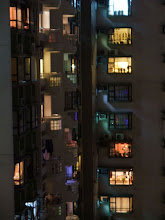“Migrancy means not only changing places, it also means the changing nature of places.” The idea of architecture by migrancy which is based upon the coming and going of people is unavoidable in this day and age. As our footprint is traceable and imprinted upon the landscape travelled. Wherever we go, part of us gets left behind. Whether it is the rubbish that we have left in the area, or the scars we have left in the landscape. (Monuments, landmarks and buildings we have built).
“Life is not made up of landmarks and destinations, but a series of passageways.”
If landmarks and destinations are viewed as solids or positive spaces, then the moment of transient/ transition which occurs are what that defines the solids. Therefore leaving passageways as the void that we live through unnoticeable, seeing, hearing and learning. These “meaningless” or insignificant spaces are what that provides definitions to the solid that is around it. Their ‘emptiness/ voidness’ services the harmonization of the two distinct opposites (ying and yang). These spaces – passageways if viewed in terms of Lao Tsu’s argument, would be the greyness that provides clarity to the contrasts of the black and white (which in this case would be the Landmarks and destinations).
The transformation/ evolution of the city is altered by its people – migrants. This can be applied to any area, at any point of history and time. The occurrence of these small dislocations may signify the homeland nostalgia, which explains the generation of the beginnings of ethnopolis (Little Italy,
Take any Chinatown per se, the aspiration of the space provides a false sense of belonging – as though you were in
Looking at the history of
As more people arrive, discrimination towards the Chinese increases: mostly due to the cheap Chinese laborers that become competitors to the local laborers. By isolating themselves from the rest of the society, and congregating to live together protects them from the others – creating a comparable center of refuge.
The following experiences would be a brief historical recount on what I think can be applied to mostly all Chinatowns - a stage of male dominant cheap laborers, drug and prostitution center (red light district or association with oriental exoticness), discrimination (exclusion), (finally) arrival of families, women and children, establishment of institutions and self-governing associations, commercialization and finally tourism.
The purpose of any refugee center is to facilitate or assist the resettlement of immigrants and multi-ethnic communities. Does the early stages of
With these layers of meaning that goes into the concept of Chinatown makes it wonderfully elusive – hard to define. Its layers are incorporated with the landscapes which it sits in. Wherever these Chinatowns are located, they have transformed the local architecture and urban design of that certain region of the country. The effects of migrancy have left behind landmarks, engraving their homeland nostalgias in the landscapes.
As we transit into this ethnopolis (Chinatown) most of us are unaware of the minor adjustments made by the migrants. The alterations are so minute that the awkward fitting-in goes unnoticed unless there is a arch that signifies the entry. We walk through the passageways, only experiencing the transition into a new environment through our senses.


























